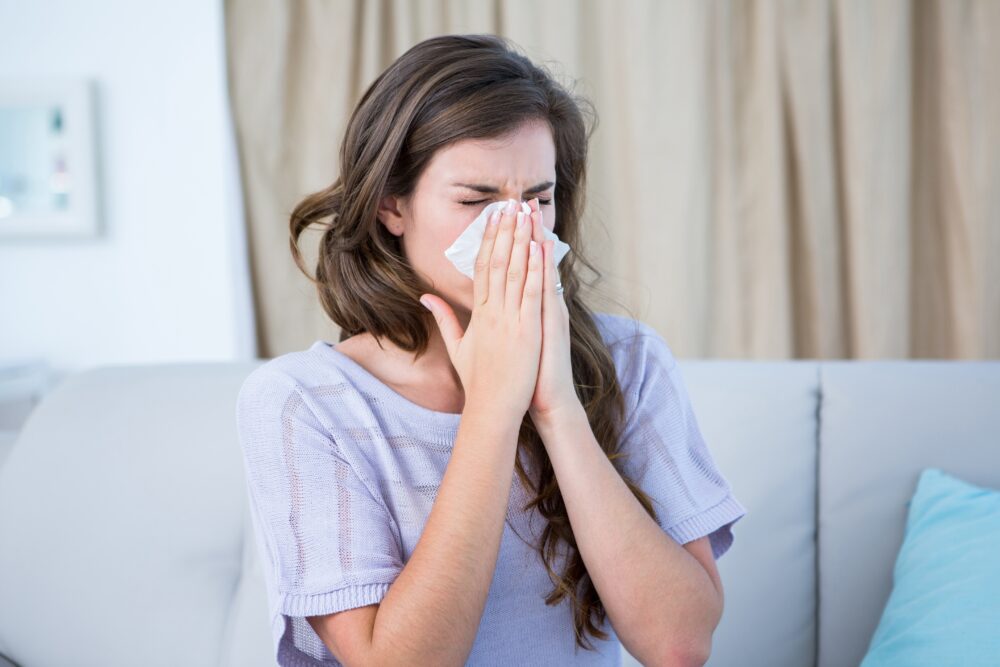Breathing Easier: HVAC Solutions for Allergy Relief
Spring arrives with blooming flowers and watery eyes. Summer brings humidity and mysterious sniffles. Fall delivers crisp air and persistent congestion. If you find yourself reaching for antihistamines more often than you’d like, your home’s air quality might be the hidden culprit. While we often blame pollen counts and outdoor triggers, the truth is that indoor air can harbor concentrations of allergens two to five times higher than outdoor air, according to the Environmental Protection Agency. Your HVAC system plays a surprisingly powerful role in either alleviating or aggravating your allergy symptoms.
At Texas Air Tech, we’ve spent years helping families transform their homes into havens from allergens, and we’ve learned that small changes to your heating and cooling system can make a remarkable difference in how you feel every day. The question isn’t whether your HVAC affects your allergies, but rather how much improvement you’re missing out on.

Understanding the Connection Between Your HVAC and Allergies
Your heating and cooling system does more than regulate temperature. Every time your HVAC cycles on, it pulls air through your ductwork, filters it, and redistributes it throughout your living space. This continuous circulation means your system is either your greatest ally or your worst enemy when it comes to managing indoor allergens like dust mites, pet dander, mold spores, and pollen that hitchhikes its way inside.
Think of your HVAC system as your home’s respiratory system. When it’s working efficiently with clean components, it breathes easily and keeps your indoor environment fresh. When it’s compromised by dirty filters, dusty ducts, or inadequate filtration, it essentially recirculates the very particles that trigger your symptoms. The good news is that optimizing your system for allergy relief doesn’t require a complete overhaul in most cases.
The Filter Factor: Your First Line of Defense
Your air filter is doing more work than you might realize. Standard fiberglass filters catch large particles, but they’re designed more for protecting your equipment than protecting your lungs. Upgrading to a higher MERV rating (Minimum Efficiency Reporting Value) can dramatically improve your system’s ability to capture allergens. Filters rated MERV 11 to 13 strike an excellent balance between allergen removal and system efficiency.
However, there’s a catch that many homeowners discover too late. Higher-rated filters are denser, which means your system works harder to pull air through them. If your HVAC wasn’t designed to handle increased resistance, you could inadvertently strain your equipment while trying to improve your air quality. This is where professional guidance becomes invaluable, as we can help you select the most effective filter your specific system can accommodate.
Humidity Control: The Often-Overlooked Solution
Dust mites thrive in humid environments, multiplying rapidly when indoor humidity exceeds 50 percent. Conversely, air that’s too dry can irritate your respiratory system and make you more susceptible to allergens. Your HVAC system’s ability to manage humidity levels is just as important as its filtration capabilities.
Modern systems can integrate whole-home dehumidifiers or humidifiers that work in tandem with your heating and cooling equipment. Unlike portable units that handle single rooms, whole-home solutions maintain consistent humidity levels throughout your entire living space. This consistency creates an environment where dust mites struggle to survive and mold growth becomes far less likely.
Ductwork: The Hidden Allergen Highway
Your air ducts are essentially tunnels that connect every room in your home, and they can accumulate years worth of dust, debris, and biological contaminants. Every time your system runs, these particles get stirred up and delivered directly into your breathing space. Professional duct cleaning removes this accumulated buildup and can significantly reduce the allergen load in your home.
Beyond cleaning, sealing duct leaks prevents unfiltered air from entering your system. These leaks allow dust and particles from attics, crawl spaces, and wall cavities to bypass your filtration entirely. Proper sealing ensures that every bit of air circulating through your home has passed through your filtration system first.
Taking the Next Step Toward Relief
Managing allergies through your HVAC system isn’t about implementing every possible solution at once. It’s about understanding your specific situation and making targeted improvements that address your home’s unique challenges. Regular maintenance, appropriate filtration, humidity control, and clean ductwork work together to create an indoor environment where you can finally breathe easy.
Your home should be your sanctuary, not a source of constant irritation. If you’re tired of living with allergy symptoms that never quite go away, it might be time to look up instead of down. Texas Air Tech specializes in creating healthier indoor environments through smart HVAC solutions. Contact us today to schedule a comprehensive air quality assessment and discover what cleaner, allergen-free air feels like.
